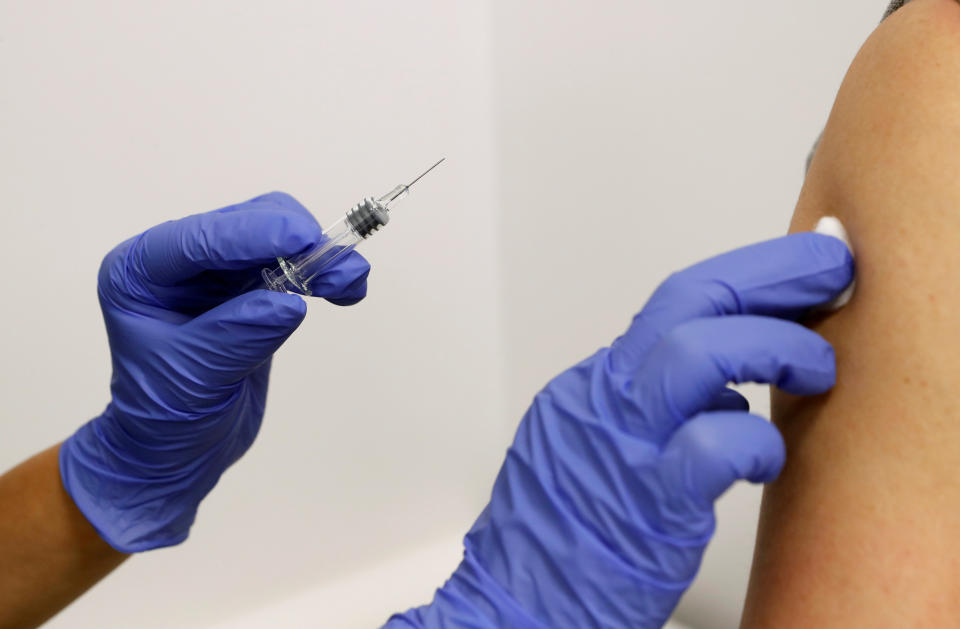Who will get the COVID-19 vaccine first? CDC names 2 highest-risk groups
The Centers for Disease Control and Prevention is now recommending that the first groups to receive a COVID-19 vaccination be health care personnel and nursing home residents, a determination made by an independent body of experts known as the Advisory Committee on Immunization Practices (ACIP). The decision comes as U.K. regulators officially approved the Pfizer-BioNTech COVID-19 vaccine, which is awaiting emergency-use authorization from the Food and Drug Administration.

ACIP, housed within the CDC, held a public meeting on Tuesday to discuss the U.S. distribution recommendations — relying on a framework put together by the National Academies of Sciences, Engineering, and Medicine (NASEM). In it, the organization suggested that 21 million U.S. health care personnel, including first responders, nurses and doctors, should take priority, in a phase known as 1a.
Although the group recommended that nursing home residents in the U.S. be given the vaccine in phase 1b, along with individuals who have preexisting conditions, ACIP concluded that the 3 million individuals living in these facilities be included in phase 1a. Evidence has shown that this group has a very high risk of severe outcomes, with one study in October finding that — despite making up less than 1 percent of the U.S. population — nursing home residents make up 40 percent of COVID-19 deaths.
During Tuesday’s meeting, CDC experts confirmed that there will likely be 40 million doses of COVID-19 vaccines available by the end of December, a number sufficient to vaccinate 20 million people. Following phases 1a and 1b of the rollout will be phase 2, which includes all individuals over 65, teachers, school staff, childcare workers and other frontline workers in high-risk settings such as food supply and transit. Phase 3 will include children, young adults and individuals who work in places deemed “important to the functioning of society” such as colleges, banks and factories. Phase 4 will be the remaining Americans.
With a total of 24 million people in phase 1a, leaders at institutions may have to make difficult decisions in the coming weeks about which of their employees are eligible to receive a vaccination in the first round. Dr. Abinash Virk, an infectious disease physician at the Mayo Clinic, is one of them. Virk is co-chairing the Mayo Clinic’s COVID-19 vaccine rollout and listened in on Tuesday’s ACIP meeting about the priorities. She agrees that nursing home residents should be given access to the vaccines in the first phase.
“It makes sense,” Virk tells Yahoo Life. “Residents of long-term care facilities are at higher risk of mortality, and it’s a congregate setting, so it doesn’t make sense to just vaccinate the staff or the residents.” At the Mayo Clinic in Rochester, Minn., she estimates that tens of thousands of employees will need to be vaccinated and that certain factors will play into who gets it first.
“We're going to have to say, ‘OK, within our 10,000 employees in the hospital, who’s going to go first? And it’s going to be the people who are at the highest occupational risk for COVID — so emergency department and ICU workers, nurses, custodians, physicians, those working in the morgue, everybody who is potentially getting exposed to patients or patient material,” she says. “Those are the kind of things that we have to prioritize within our institution.”
She says that some states may go even more granular and look at individual risks based on underlying conditions but that she does not plan to delve into individual employee health. Instead she will focus on the work environment, as well as whether the employee has contracted COVID-19. “If somebody had COVID-19 within 90 days, we are going to push them out for at least three months,” she says. “We may have to ask that question to filter them out.”
While there are many decisions still to be made, Virk hopes that Americans feel confident in the safety data thus far — and stresses that everyone will eventually have access to vaccination. “I think people sometimes get caught up in the fact that we’re talking about health care workers initially, or long-term care facility residents, but this is just the first couple of weeks,” says Virk. “As soon as the vaccine becomes more and more available, it’s going to be rolled out to everybody, whoever wants it. But until then, we have to give it to the people who are most likely to benefit. We just can’t vaccinate 300 million people at the same time.”
For the latest coronavirus news and updates, follow along at https://news.yahoo.com/coronavirus. According to experts, people over 60 and those who are immunocompromised continue to be the most at risk. If you have questions, please reference the CDC’s and WHO’s resource guides.
How to maintain your physical and mental health during the pandemic
Taking care of a loved one with COVID-19? Here’s how to stay healthy
Q&A with Dr. Kavita Patel: How to keep your family safe and maintain your mental health
Read more from Yahoo Life
Want lifestyle and wellness news delivered to your inbox? Sign up here for Yahoo Life’s newsletter.


